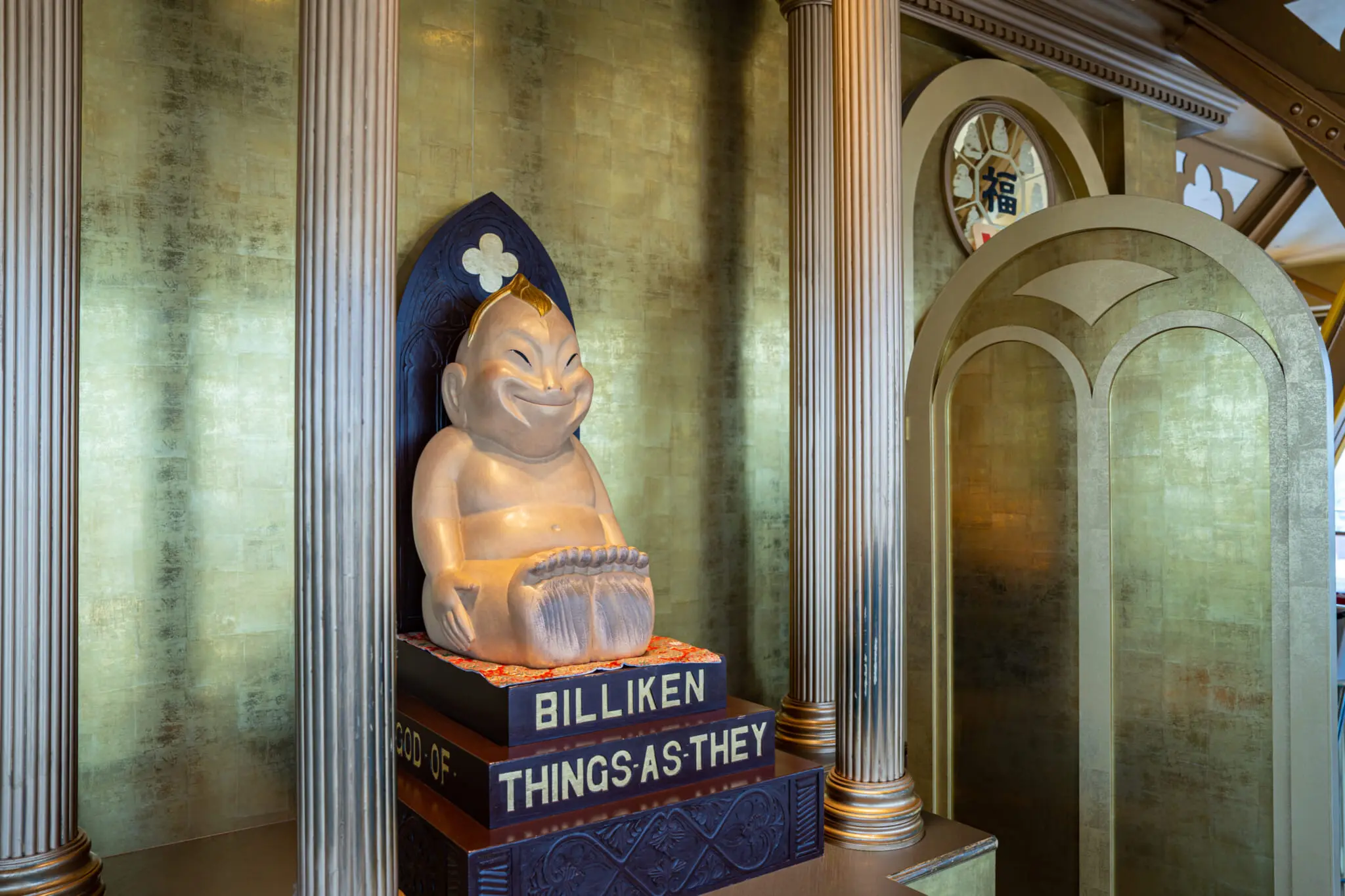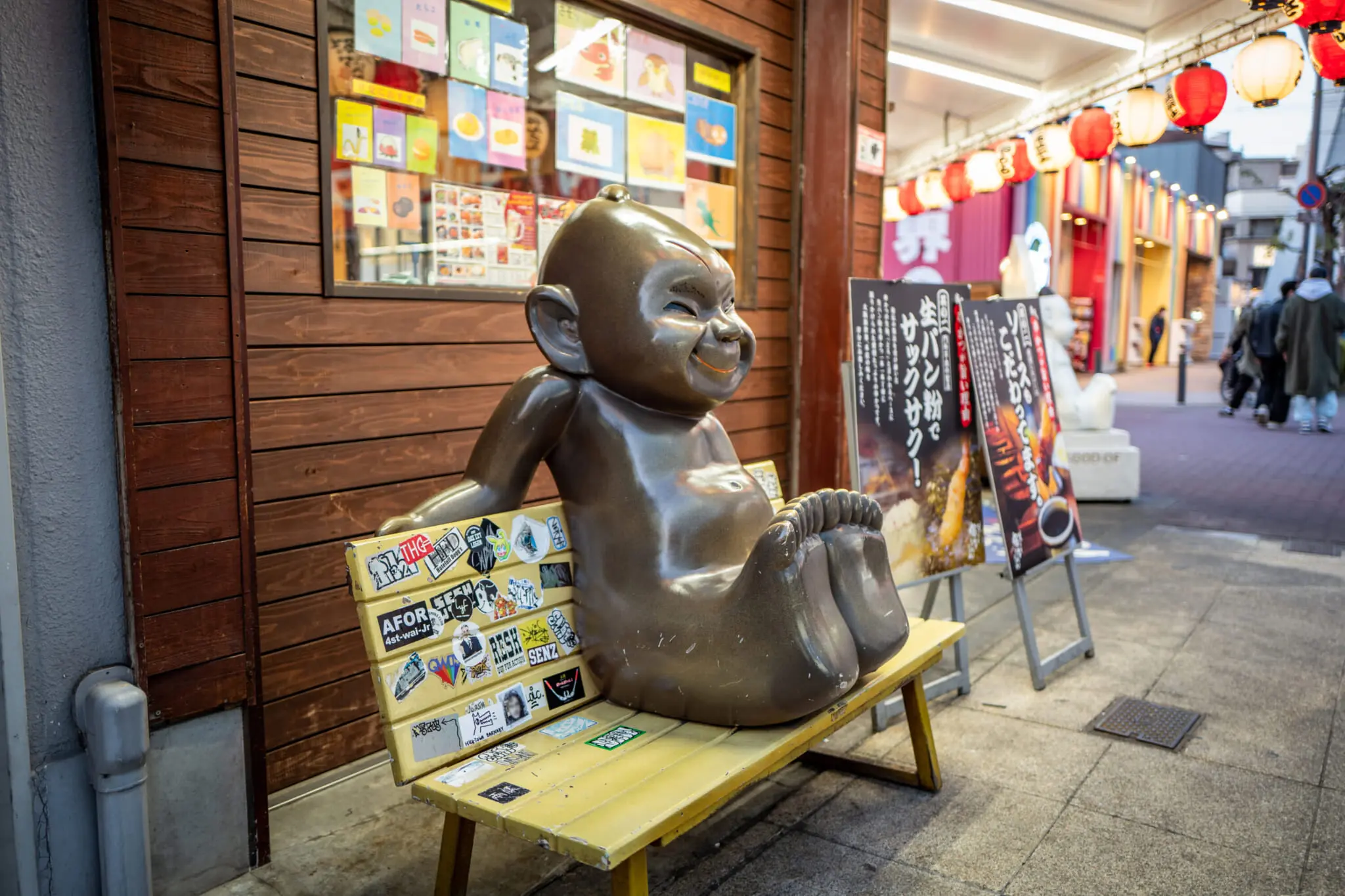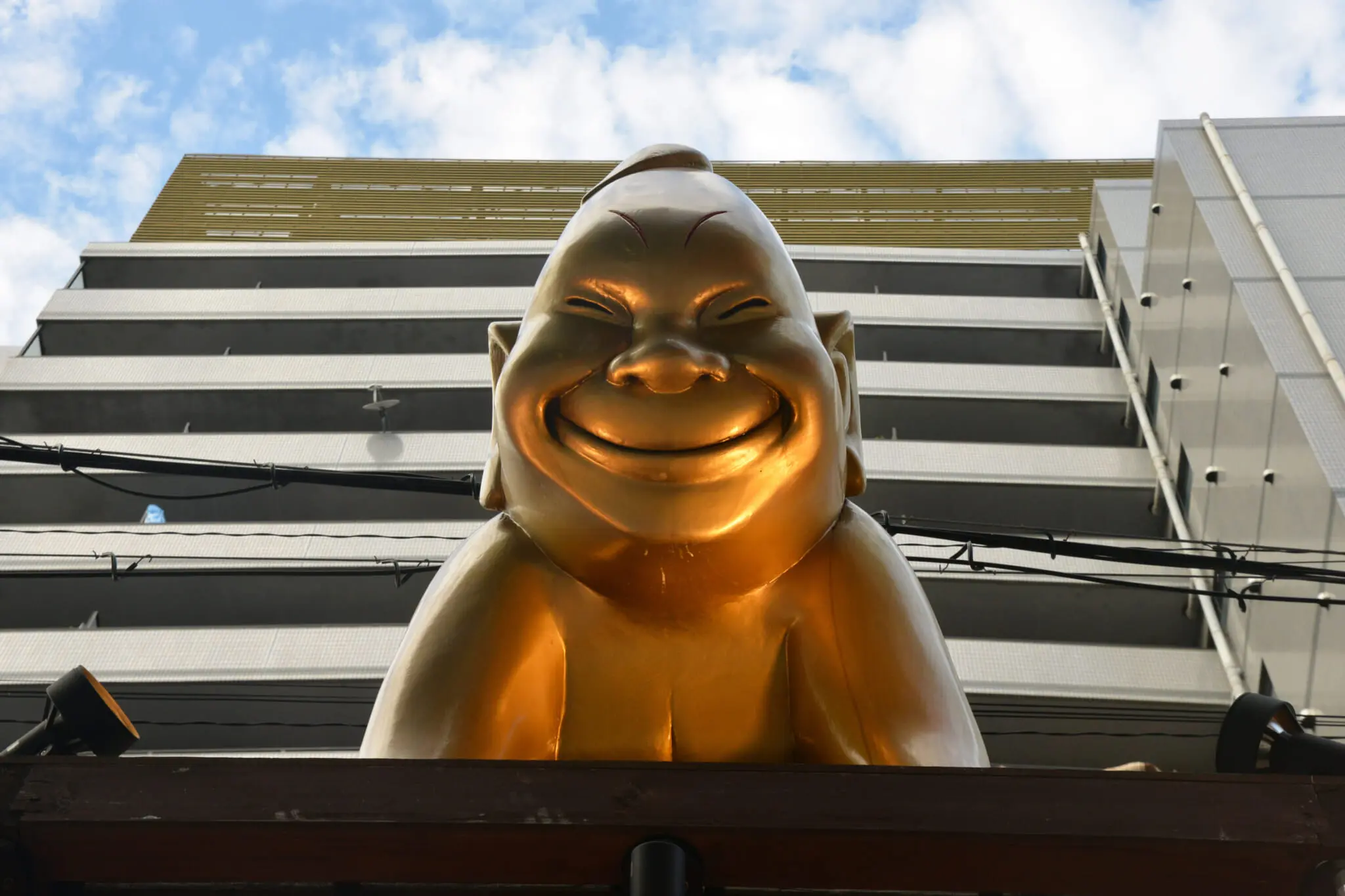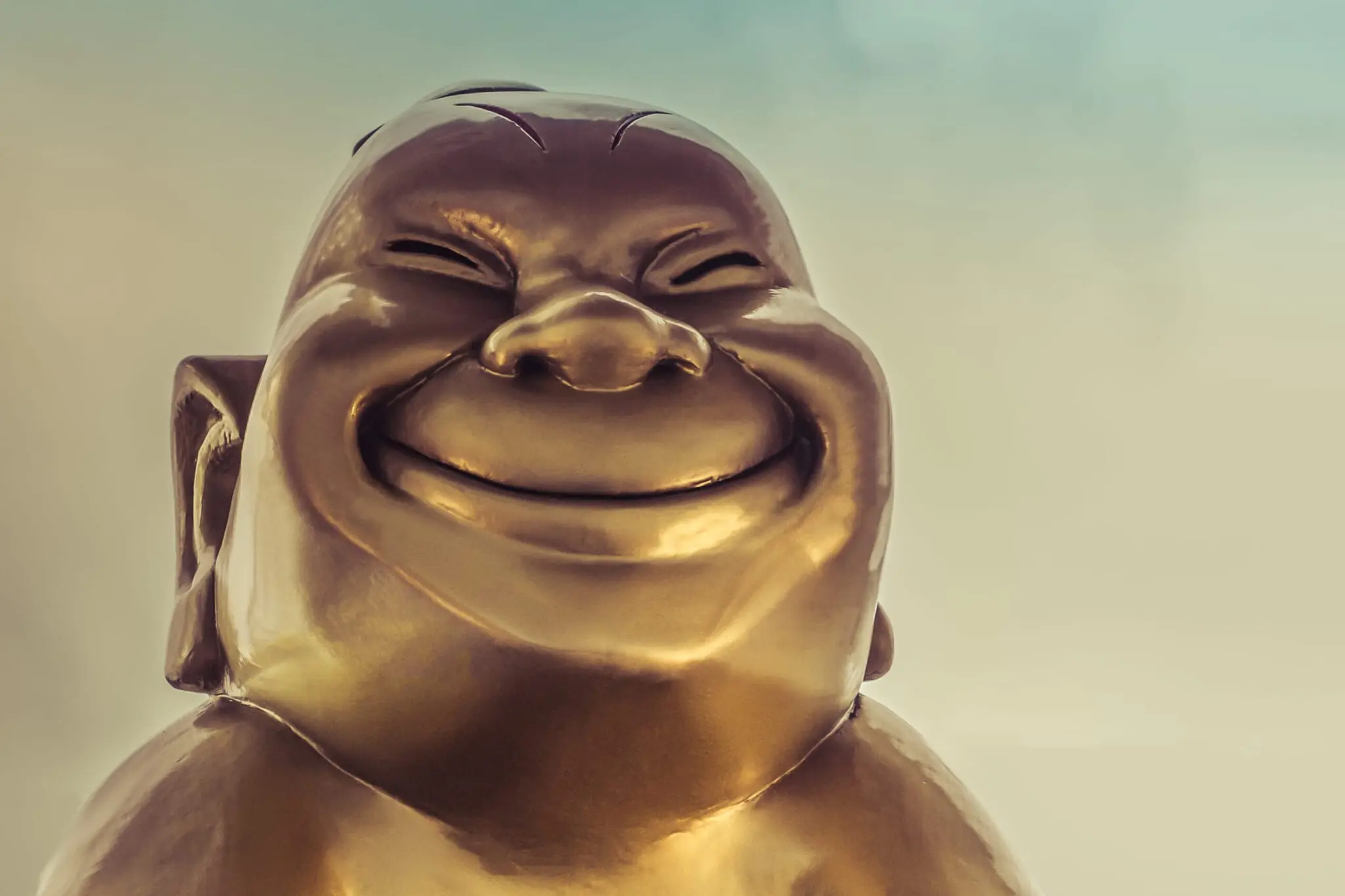This article appeared in Kansai Weekender 2024.
To read the entire issue, click here.
If you’ve strolled through Osaka, you’ve likely encountered the city’s ubiquitous golden statues. Meet Billiken, Osaka’s unofficial mascot, renowned for his wide, beaming smile and reputation as a bringer of good fortune. Perched outside many stores and landmarks, Billiken exudes a whimsical charm that brings a touch of joy and humor to those who cross his path.

The God Who Does Nothing
Billiken’s appearance is as distinctive as his role. He is a chubby, slant-eyed creature that looks like a little boy — but there’s something distinctly unhuman about him. Sitting upright with his arms to his sides, a small tuft of hair covers his pointy head, while his disproportionately large feet are flexed in front of him. Typically rendered in gold, the soles of his feet and belly often shine from the countless hands that rub them for good luck.
According to the official Japanese Billiken website, Billiken is the god of “things as they ought to be” — though his statues sometimes sport the grammatically truncated “things as they,” garnering chuckles from English speakers. Osaka embraced this concept, understanding Billiken to be a god who, delightfully, does nothing. He simply sits, smiling his cheeky, crinkly-eyed smile, and observes humans and events unfold as they are meant to. Billiken is a reminder that humans are responsible for their own happiness and shouldn’t rely on divine intervention.
Or, perhaps, Billiken is the most useless god of all time. Either way, his playful nature perfectly embodies Osaka’s jokester spirit.

An All-American God
Unlike most Japanese gods with centuries of lore, Billiken only emerged in the early 20th century. Also, Billiken isn’t even Japanese. One night in 1908, Kansas City artist Florence Pretz dreamed up Billiken, securing the first patent for a deity. The origins of his name are not completely clear, but theories suggest that it comes from the poem “Mr. Moon: A Song of the Little People,” by Bliss Carman and Richard Hovey, where Billiken is included in the names of the “little people” taunting the moon. Other theories suggest that Billiken is a nickname for the then-president William Howard Taft.
As soon as Billiken was introduced to the world, he immediately captured the public’s imagination. He appeared in postcards, newspapers, advertisements, toys — he was even the subject of a satirical song sung by Blanche Ring. His popularity soared, with Billiken becoming the mascot of Saint Louis University and gaining international fame, eventually arriving at the shores of Japan.

The God Who Went Missing
Osaka first welcomed Billiken in 1909, when the original statue was erected in a Shinsekai amusement park called Luna Park. Fabric shop owner Komajiro Tamura became so enamored by this statue that he trademarked it as the patron god for his company, Tamurakoma, in 1911. However, when the park was shut down in 1923, the statue mysteriously vanished.
In 1979, a replacement statue of Billiken was installed in Tsutenkaku Tower, modeled after Tamurakoma’s 1949 version. Though frequently replaced due to the wear on his shiny feet, the most famous Billiken statue of Osaka sits in the Golden Observation Platform of Tsutenkaku Tower, looking out at the city from 87.5 meters above ground. In a few decades, Billiken went from an amusement park exhibition to a local deity — all without doing anything.
A Problematic God
The fact that Billiken was created by a white woman in Missouri in the early 20th century might raise some concerns. Florence Pretz was quoted to have been “dreaming of all things Japanese,” when she came up with Billiken. Knowing this, it’s hard to un-see Billiken as a slant-eyed caricature.
There are very few explicit descriptions of Billiken as Asian. Victoria Gray, the Collections Manager at The Strong National Museum of Play theorizes that “the toy industry was not necessarily invested in making the Billiken’s Orientalist backstory a central part of the doll version’s marketing strategy. Explicitly advertising the toy as ‘Japanese’ might have gone too far in testing the boundaries of propriety, inciting fear of ‘race suicide’ rather than the sense of playful naughtiness for which the Billiken doll was prized.”
Piecing together magazine scraps and vintage toy box prints, it’s probable that Billiken was an American invention of a Japanese deity baby. However, it’s also true that Billiken resonated with Japanese people and was warmly embraced by Osaka.

The Billiken of the Future
Billiken’s inexplicable charm persists. His wide, mischievous smile hints at secrets unknown, or perhaps it’s simply our affection for cheeky, chubby babies that draws us in.
In 1996, Billiken was featured in a movie directed by Junji Sakamoto, and today, you can explore Osaka through augmented reality by scanning Billiken statues throughout Osaka. Though Billikan hails from Missouri, he continues to enchant Osaka, smiling at its residents as they navigate their lives in pursuit of happiness. Despite his lack of tangible influence, Billiken might have given us exactly what we needed all along.









